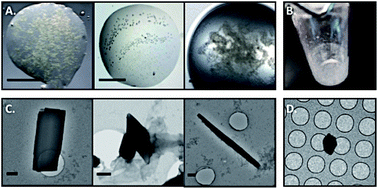MicroED in natural product and small molecule research
Abstract
Covering: 2013 to 2020
The electron cryo-microscopy (cryo-EM) method Microcrystal Electron Diffraction (MicroED) allows the collection of high-resolution structural data from vanishingly small crystals that appear like amorphous powders or very fine needles. Since its debut in 2013, data collection and analysis schemes have been fine-tuned, and there are currently close to 100 structures determined by MicroED. Although originally developed to study proteins, MicroED is also very powerful for smaller systems, with some recent and very promising examples from the field of natural products. Herein, we review what has been achieved so far and provide examples of natural product structures, as well as demonstrate the expected future impact of MicroED to the field of natural product and small molecule research.



 Please wait while we load your content...
Please wait while we load your content...